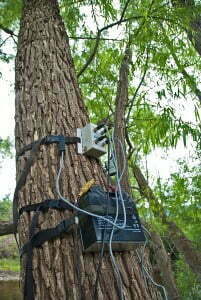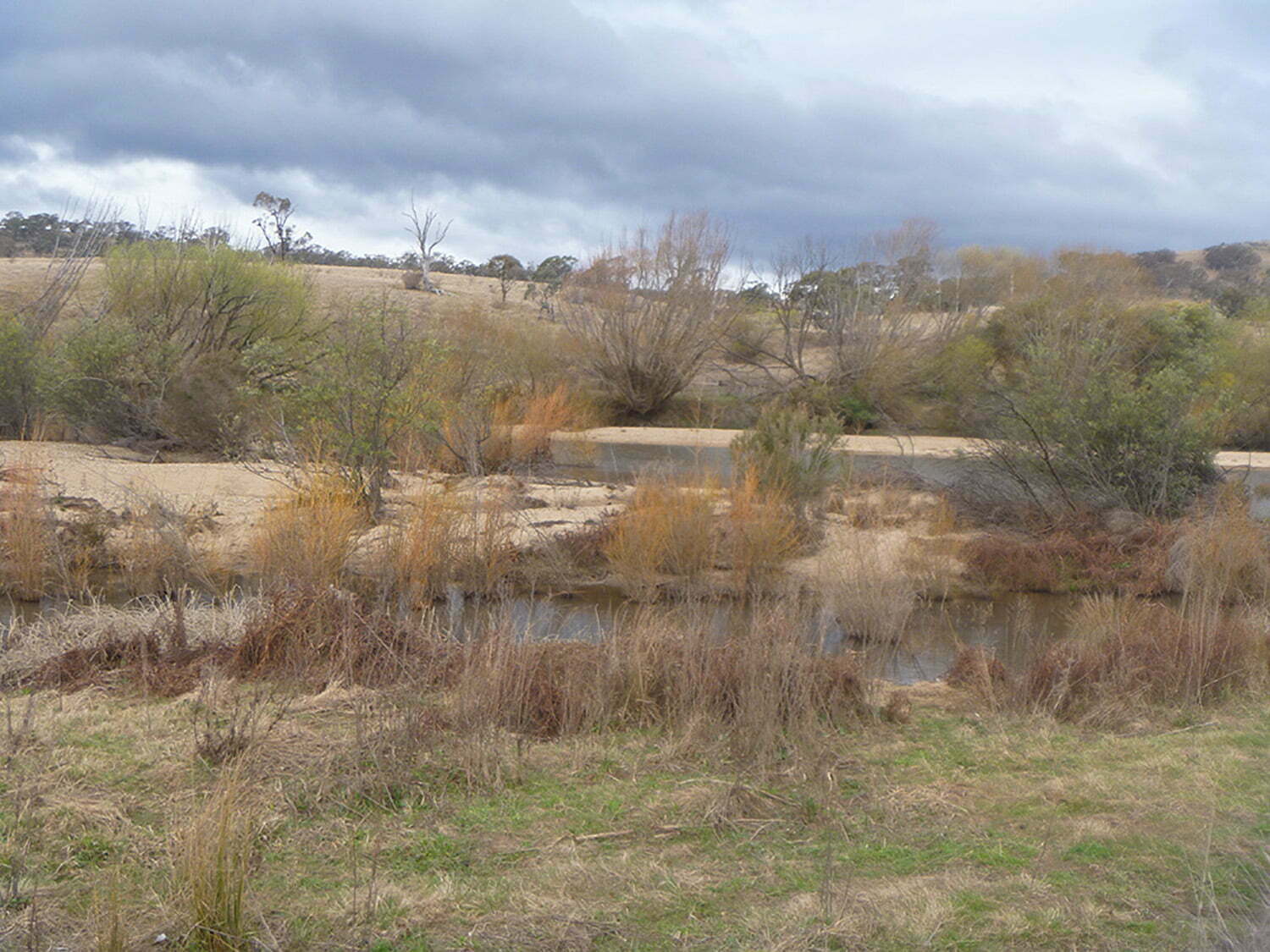“Within a 25km squared study area, canopy area and water savings estimates suggest that a the removal of 10.4 ha of willows will potentially return 41ML of water per year to the environment.”
We talk a lot about river health here at RoC – it’s what we’re passionate about! We have talked before about the challenge that willows pose, the impact they have on our waterways, and ways that we can manage them effectively. That’s why we think that this new research from CSIRO is incredibly important. The research has confirmed that removing willows from stream beds has the potential to result in water savings, and researchers have also developed tools for catchment managers to monitor willows and estimate water savings from willow removal.

Sap flow sensors installed in willows are used to measure how much water willows consume. Image credit: CSIRO.
The research was conducted in southeast Australia, where willows have been identified as naturalised weeds that invade stream beds. Willows account for more lost water than equivalent densities of native species when located in stream beds.
Within a 25km squared study area, canopy area and water savings estimates suggest that a the removal of 10.4 ha of willows will potentially return 41ML of water per year to the environment.
It is also important to note that the study found substantial differences in the rates of water loss between willows with permanent and semi-permanent access to water. While willows with permanent access to water had a transpiration rate of 15.2 mm/day, those with semi-permanent access had a rate of only 2.3 mm/day. This suggests that while water is returned when riverine willows are removed, culling willows from river banks is unlikely to generate water savings.
Management tools
Willow management is incredibly complex and varies based on the extent of willow colonisation. CSIRO has developed a method that helps catchment managers determine and monitor willow distribution spatially and temporally, as well as calculate potential water payback from willow removal based on climatic zone. This is crucial when analysing the cost-benefit of willow removal.
The tables below compare the total evapotranspiration (water loss) of willows, native riparian vegetation and unshaded open water. This is a valuable tool to estimate water savings from willow removal and replacement with native vegetation.

Table A: Measured or estimated water balance components and calculated total evapotranspiration (ET) of Red Gums, Salix babylonica and open water for the 2005/2006 and 2006/2007 measurement period at Jerilderie, and the 2007/2008 measurement period at Yanco. “Savings” refers to potential water savings (ML year-1) per hectare of willow crown projected area, if in-stream willows are removed. 95 % confidence intervals (CI) for each water balance component and total ET are shown, illustrating upper and lower limits of total ET and potential water savings.

Table B: Measured water balance components and total evapotranspiration (ET) of Salix fragilis and open water evaporation at Happy Valley (HV) and Tea Garden (TG) and mixed riparian eucalypts at TG in 2008/2009. “Savings” refers to potential water savings (ML year-1) per hectare of willow crown projected area, if in-stream willows are removed. 95 % confidence intervals (CI) for each water balance component and total ET are shown, illustrating upper and lower limits of total ET and potential water savings.
In addition to these tables, a remote sensing technique was developed using satellite imagery that discriminates the canopy area of willows from native vegetation. The tool also separates in-stream willows from bank located willows. When used in conjunction with the tables above, this satellite mapping tool enables weed and water mangers to make accurate regional estimates of willow evapotranspiration and potential water savings for mapped target areas.
When we take all the data into account, for every hectare of willow canopy removed, 3.9-5.5 ML of water could be saved every year depending on the local climate (Doody, n.d.). To put that into perspective, an Olympic swimming pool contains only 2.5 ML of water (BOM, n.d.)!
Other resources with information about the impact of willows and effective management are available here:
- What is the problem with willows?
- Healthy ecosystems downloadable resource pack
- The River and Riparian Land Management Technical Guideline (series)
Or, you can find out more about this research here:
Principles and guides for managing riparian land
Our resource pack contains plenty to help you improve the function and health of aquatic ecosystems, from controlling willows to managing woody debris in rivers, and more.

